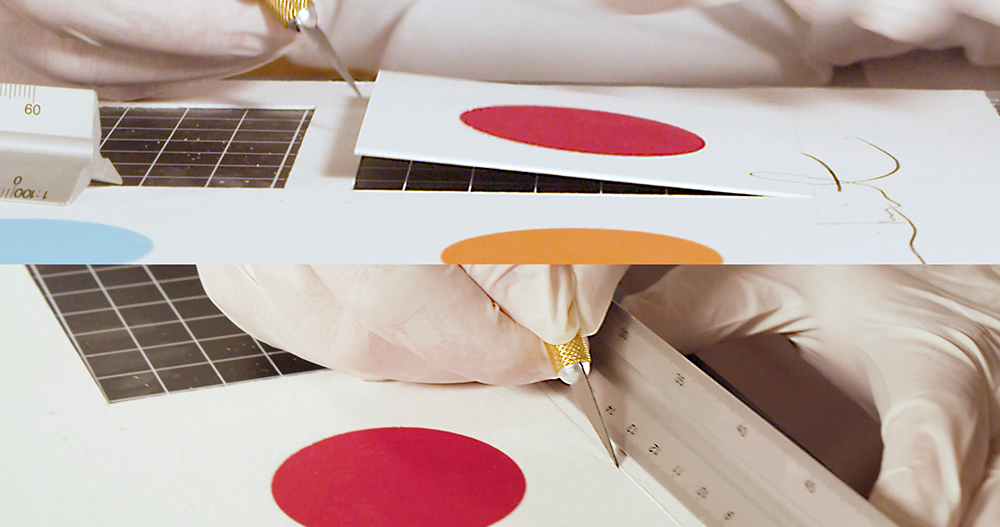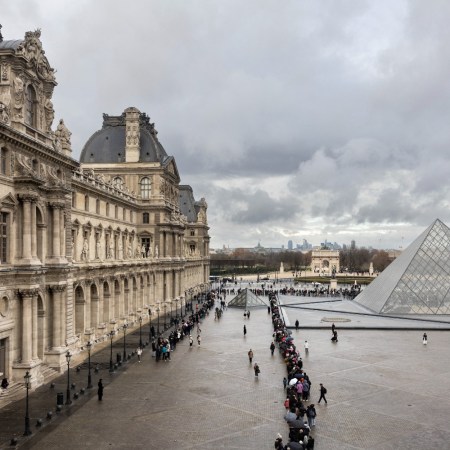Some of the art that brought Damien Hirst his early notoriety involved, well, taking something existing and dividing it into smaller sections. His 1993 sculpture Mother and Child (Divided), for instance, consisted of the preserved bodies of a cow and calf, each divided in half. It made for a visually distinctive (and controversial) work of art; it’s also tremendously memorable.
It is somewhat ironic that a work of Hirst’s own has been handled in the same way that Hirst handled so many of his raw materials early in his career. But that’s precisely what happened when MSCHF got ahold of Hirst’s 2018 painting L-Isoleucine T-Butyl Ester — one of his spot paintings — and, well, chopped it up. As their name suggests, MSCHF is known for puckish and provocative events, many of them with a technological bent.
In this case, they’ve opted to skewer the art world. The website for the project, Severed Spots, is attributed to “MSCHF Gallery,” with a logo that wouldn’t look out of place on any well-heeled Manhattan art space. The cost of the original Hirst painting? $30,485. Once they had it, MSCHF cut out each of the spots — 88 total — and sold them at a cost of $480 apiece.
Still to be sold? The remaining canvas, now dubbed 88 Holes. It’s currently available at auction; the current bid, as of this writing, is $126,500. So, yes — MSCHF dramatically increased the value of this painting by (depending on your perspective) destroying it or turning it into 89 different works of art.
According to the group’s manifesto for the project, they were inspired by the idea that treating art as an investment art often involves making that art inaccessible to anyone who might want to see it. To wit:
From one owner to many – a distinction immaterial as long as the piece is destined for a storage locker in Gibraltar. The difference, of course, is that we’ve taken it literally and made a stop at the knife shop while we’re at it.
The idea of a painting being worth more destroyed than intact has had some traction lately — see also, the Banksy painting that self-destructed in 2018. MSCHF’s new project offers a tangible look at the economics of art; it’s also pulled off a profit that would make many investors jealous.
Subscribe here for our free daily newsletter.
Thanks for reading InsideHook. Sign up for our daily newsletter and be in the know.


















